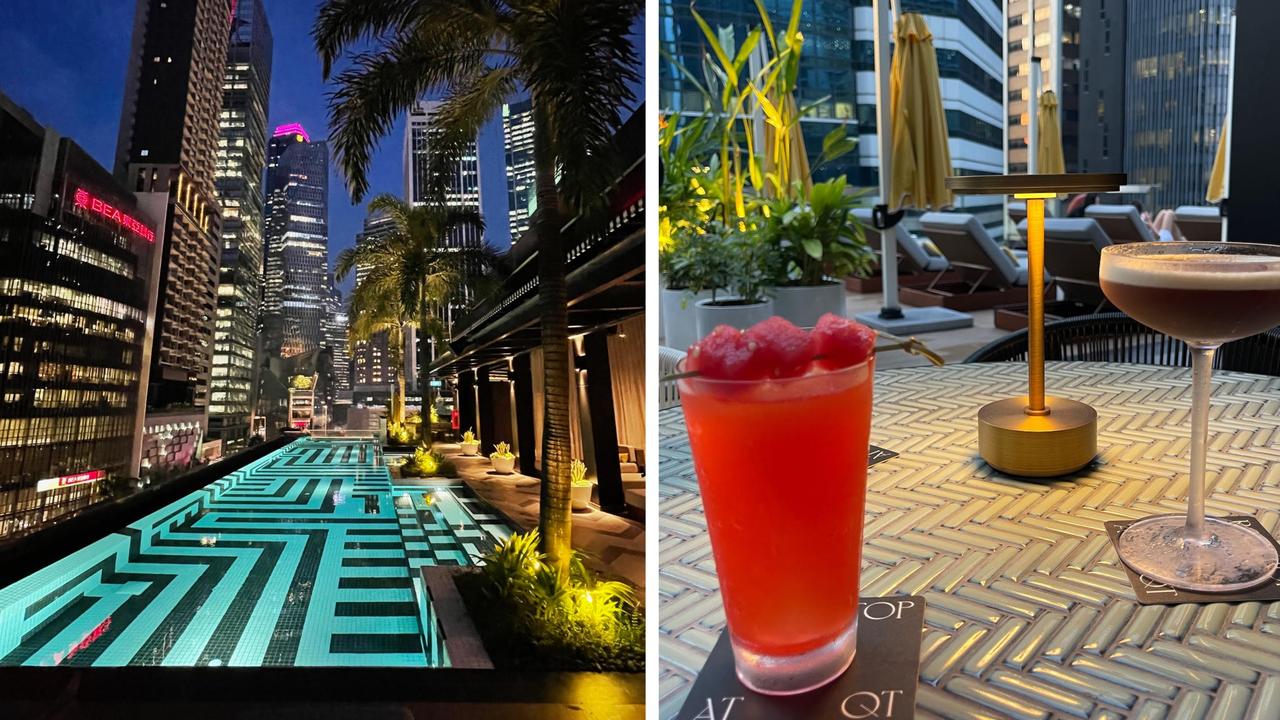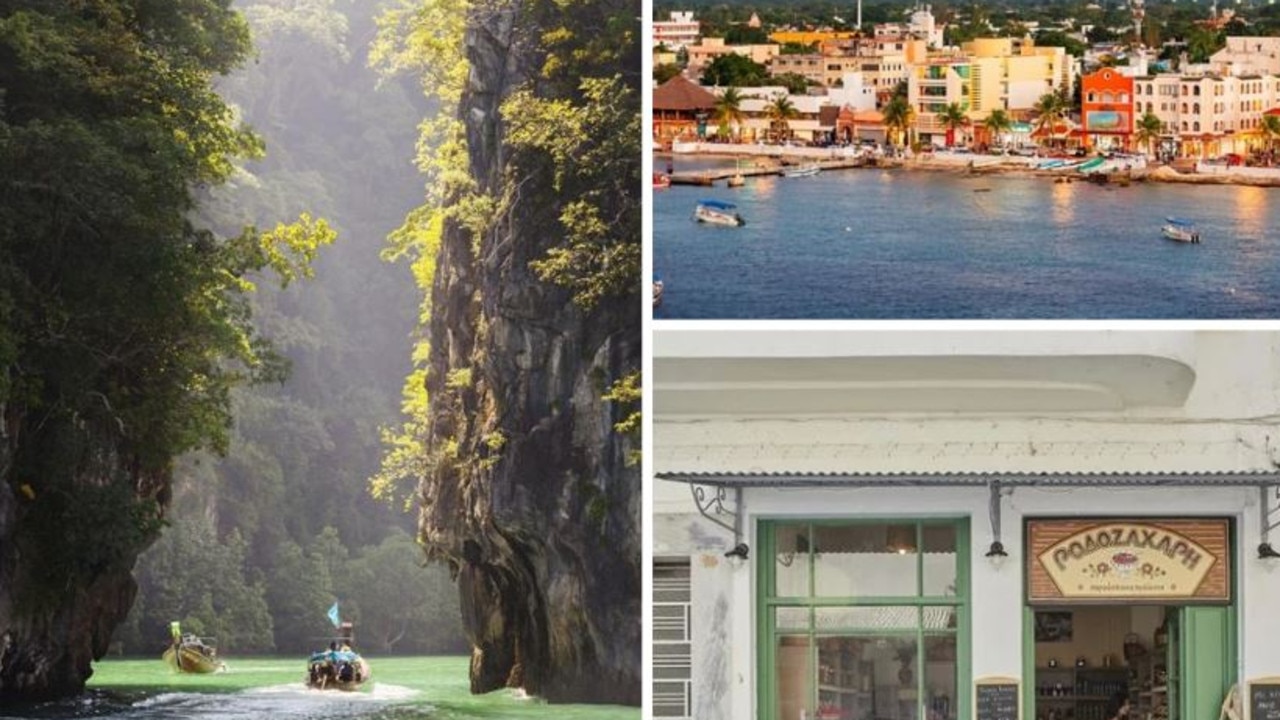Here's mud in your eye
FORGET fancy seaweed wraps, Brian Johnston swears a bloke likes nothing more than a good wallow in a thermal mud bath.
MAYBE it's a male thing, but getting wrapped in seaweed, splashed with yoghurt and rubbed down with coconut husks really does nothing for me.
And when the treatment also involves listening to Enya, trying to pronounce ylang-ylang, and then leafing over $400 for the privilege, you can count me out.
After all, I can buy a tub of yoghurt for $2 and splash it on myself.
Besides, Mother Nature provides plenty of natural health benefits - for free, or almost.
Take to hot springs, volcanic mud and limestone baths in the great outdoors. Your skin will glow, your stress float away, and you'll enjoy some of the world's most amazing scenery to boot.
Talking Turkey in Pamukkale
The first natural spa I experienced was at Pamukkale in Turkey, easily accessible from the coastal resorts of the Aegean.
For a thousand years, limestone deposits have been oozing down the mountain here, forming a spectacular series of terraces and pools. I remember bathing like Cleopatra in the white milk and gazing over the plains towards the distant sea.
Unfortunately, since those days, too many oversized tourist buttocks have been eroding this natural phenomenon. But, in the past few years, World Heritage listing has returned the startling pools to their dazzling white.
You can no longer wallow at will, but you can still use the Sacred Pool, whose clear effervescent water looks down on old columns, a reminder of this place's ancient lineage.
The aristocracy used to come here 2000 years ago, and not least of the attractions are the ruins of Hierapolis nearby, including a stunning ancient theatre. Now that's something you won't see at a regular resort spa.
Keep it in the family in Sicily
Entrance to the Sacred Pool costs $7, but if even that is too much to pay for a spa treatment, then head to the Aeolian Islands just off the north coast of Sicily.
This is the most active volcanic region in Europe, famous for the fire-spitting Stromboli. The adjacent island of Vulcano has mud baths just a few steps from the ferry port that will cost you about $2.
Really, these are just one big pit of gooey mud, full of hefty Germans holding their noses against the stink: no aromatherapy here.
Still, the cure is said to be good for arthritis and rheumatism.
The baths are actually radioactive, so you're counselled against staying in too long, otherwise you might emerge with three legs, all aglow.
Afterwards, you can scamper down to the sea for a wash in hot springs that conveniently bubble up just offshore like a natural jacuzzi. Invigorated, it's worth making the hike to the summit of the volcano. The path follows a deeply eroded gash of contorted pink and orange rock.
Wisps of steam hiss from fumaroles. The views are magnificent. Only disadvantage: your clothes and hair will stink of sulphur (rather than ylang-ylang) for a week afterwards.
Gorge yourself in Switzerland
Hot springs pop up all over Europe, even in the most unexpected places. Hike into Tamina Gorge in eastern Switzerland, where the cliffs rise 70m on either side, and you'll find water gushing out at a warm 37C.
The nearby town of Bad Ragaz has been attracting spa customers since the thirteenth century. The famous doctor Paracelsus cemented its reputation in 1535 when he declared the waters good for the health.
Visitors can take to spa baths, grottoes, water chutes and whirlpools. Then you can lie back, covered in hay and alpine flowers, in what must be the ultimate natural treatment.
Spring it hot in Korea
Over in Asia, meanwhile, Korea is also bubbling away with hot springs, many of which are laden with sulphur, magnesium, calcium and other minerals that are said to convey a whole range of health benefits.
Koreans love to point out that their springs are a cheap alternative to expensive cosmetics, giving women beautiful skin without the price tag.
Entrance fees are small, and many hot spring destinations feature both outdoor and indoor springs, as well as hydro-massage facilities and all manner of specialised tubs containing medicinal herbs.
Probably the best destination for foreign visitors is Seorak Waterpia, near scenic Mount Seorak, where water gushes up from under the mountains at a toasty 49C.
The setting isn't exactly natural, as a whole theme park has risen up around the waters: hot tubs, swimming pools, water slides and a wave pool.
Still, the open-air baths overlook the mountains on one side and the sea on the other, and are certainly soothing for the soul.
Vent your steam in Japan
In neighbouring Japan, the fun of exploring the numerous hot spring resorts is that no two are exactly the same. For something really different, though, Ibusuki in southern Kyushu is the place to go.
Balmy temperatures, palm trees and a low-key feel make this a pleasant seaside town. Volcanic vents rising up from under the black-sand beach add a touch of the surreal.
Lie on the sand and get buried up to your neck by busy old ladies as you gaze at the cone of Kaimondake Volcano.
It's the volcano that provides the sand's heat, good for all manner of bodily aches and pains. Fifteen minutes is probably enough, otherwise you'll end up as cooked as the eggs that locals bury for their picnics.
Smells like Rotarua
Closer to home, you only have to head to New Zealand for one of the best natural spa experiences on the planet.
Rotarua is renowned for its hot springs, bubbling mud pools and erupting geysers. Among the spectacular coloured mineral pools are some just the right temperature for bathing.
Hell's Gate, 15km northeast of Rotarua, features the hot-water Kakahi Falls, a boiling whirlpool, mud pools and the wonderful sight of steam rising lazily through the trees.
The mud bath isn't that cheap at $NZ70 (about $57), but service is great and there's none of the fuss you experience in regular spas. It's a lot of fun, and said to be good for the skin.
Get your thermals on in the Top End
You don't even have to head overseas to find a natural spa - the Northern Territory will do just fine.
Hot water bubbles up at Mataranka, about 110km south of Katherine, at a comfy 34C, providing a little oasis in the arid outback in the process.
Float around in turquoise water, surrounded by rustling pandanus and palms, in which little rainbow bee-eaters flit. Mind you, the roosting flying foxes might be somewhat pungent.
Still, that's the thing about Mother Nature: you have to accept the good and the bad.
The Sunday Telegraph



